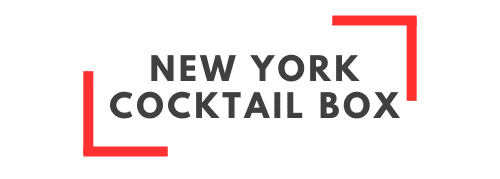Agile methodology: revolutionizing project management

In today’s fast-paced business environment, the ability to adapt and deliver rapidly is more crucial than ever. Traditional project management approaches often fail to keep up with the need for speed and flexibility. Enter Agile methodology, a game-changer in the world of project management. Agile has become synonymous with efficiency, collaboration, and continuous improvement, transforming how teams approach the development of products and projects. This comprehensive guide will delve deep into the essence of Agile, its frameworks such as Scrum, and the benefits it brings to project teams and customers alike.
Understanding Agile and Its Principles
At its core, Agile is a set of values and principles that prioritize flexibility, customer satisfaction, and high-quality output. The Agile Manifesto, formulated in 2001, lays out the foundational beliefs that drive this approach. Agile methodologies are a response to the limitations of traditional project management, which often involves rigid planning and linear execution that can hinder swift adaptation to change.
Dans le meme genre : How to create an irresistible value proposition for your business
Agile Manifesto and Its Impact
The Agile Manifesto consists of four central values and twelve principles that emphasize individuals and interactions over processes and tools, working software over comprehensive documentation, customer collaboration over contract negotiation, and responding to change over following a plan. These values and principles have shaped the Agile approach, fostering an environment where change is not just expected but welcomed.
Agile’s Flexibility in Practice
Agile encourages short cycles of work, known as sprints, allowing for regular reassessment and adaptation of plans. This iterative process helps teams to quickly pivot in response to feedback or shifts in the market. The flexibility inherent in Agile allows teams to deliver value incrementally, ensuring that the product evolves effectively to meet customer needs.
A lire aussi : Digital marketing for campaign management agencies : tips to win clients
Scrum: A Popular Agile Framework
Scrum is perhaps the most widely recognized Agile framework. It provides a structured yet flexible methodology for managing complex projects. Scrum’s popularity lies in its simplicity and its focus on continuous improvement through regular reflection and adaptation.
Role of the Scrum Team
A Scrum team typically includes a Product Owner, responsible for maximizing the value of the product, a Scrum Master, who ensures that the team adheres to Scrum practices, and the team members who do the work of delivering the product increment. The collaborative nature of Scrum fosters an environment where all members are committed to the project’s success.
Sprints and Continuous Delivery
In Scrum, work is divided into sprints, usually lasting one to four weeks. Each sprint begins with a planning meeting, where user stories—descriptions of features from the user’s perspective—are selected for development. The sprint ends with a review and retrospective, allowing the team to present the completed work and reflect on the process for continuous improvement.
Agile’s Impact on Project Teams
Agile methodologies have revolutionized the way project teams operate. By embracing Agile, teams are more adaptive, innovative, and ultimately more effective in delivering successful project outcomes.
Enhanced Collaboration and Communication
Agile places a significant emphasis on collaboration and communication among team members. Daily stand-up meetings, paired with the use of visual project management tools, keep everyone informed and engaged. This transparency in the work process allows for quick decision making and problem-solving.
Focus on Customer Satisfaction
Agile methodologies hinge on the delivery of value to the customer in the shortest sustainable amount of time. Through regular interactions and feedback loops with customers, Agile teams ensure that the product aligns with the customer’s needs and expectations, thus driving higher customer satisfaction.
Agile’s Role in Software Development
Software development has been particularly receptive to Agile methodologies. The need for rapid development cycles and the ability to respond to changing requirements has made Agile the preferred choice for many software companies.
Agile Software Development Process
The Agile software development process is iterative and incremental. It allows developers to focus on building a minimum viable product (MVP) and then iterating based on user feedback. This approach reduces the risk of developing features that are not aligned with user needs and ensures a better end product.
Data-Driven Decision Making
Agile software development is often data driven, with metrics and user analytics guiding the development process. By analyzing data from real users, Agile teams can make informed decisions about which features to prioritize, thereby ensuring that they are always working on the most valuable tasks.
The Continuous Improvement Paradigm
Continuous improvement is an integral part of Agile methodologies. This concept is not limited to the products being developed; it also applies to the processes and skills of the Agile teams.
Iterative Development and Learning
Agile teams learn from each sprint, applying lessons learned to improve both their workflow and the product. This iterative learning process creates a culture of continuous improvement that leads to greater efficiency and innovation over time.
Building a Sustainable Agile Culture
For Agile to truly revolutionize project management, it needs to be embedded in the culture of the organization. Teams must be empowered to make decisions, and there must be a willingness to embrace change and learn from failures. When Agile principles are deeply ingrained, they lead to better outcomes and a competitive advantage in the marketplace.
Conclusion: Agile as the Future of Project Management
Agile methodology has indeed revolutionized project management. By focusing on flexibility, customer satisfaction, and continuous improvement, Agile allows teams to deliver high-quality products that meet the evolving needs of the market. As more organizations recognize the benefits of Agile, its principles and practices become increasingly vital for success in a world where change is constant.
The adoption of Agile methodologies like Scrum has shown that project teams can achieve more through enhanced collaboration, iterative development, and data-driven decision making. The role of Agile in software development, in particular, has proven its capacity to produce superior results in terms of both product quality and customer satisfaction. As Agile continues to shape the landscape of project management, it is the organizations and teams that fully embrace its principles that will thrive in the years to come. Agile is not just a methodology; it is a mindset that will continue to drive innovation and excellence across industries.
